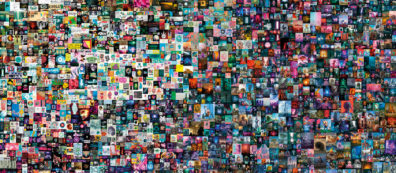E-commerce has been increasingly driving the retail landscape for several years, and it’s no secret that over the past 18 months, that movement has only accelerated. But more than a destination or a mere point of purchase, e-commerce has evolved into a vast ecosystem, a bastion for product discovery, community development, social proof, UGC, first-party data collection, loyalty marketing and so much more. Within this ecosystem, there are a plethora of macro and micro trends, technologies, behavioral shifts and fascinating nuances taking shape, the most important of which we explore below.
As always, Mastermind Marketing remains on the cutting edge of what matters most in the e-commerce space, and we welcome the opportunity to discuss the implications for your brand!
Here are the top 9 e-commerce trends powering retail in 2021:
1. Augmented Reality enhances the reality of online shopping.
This once-promising technology has become so advanced that today, consumers can genuinely see the item they are shopping for in truly contextual ways on-screen, helping them make an informed and inspired buying decision. With AR, people cannot merely see a 3D model of a product, but they can see exactly how they’d look if they were wearing the product themselves. In the not-too-distant future, AR will become the standard across social media and e-commerce.
2. Voice Search Continues to Grow Exponentially
In the coming years, the vast majority of US households will own a smart speaker, and already today the number of people using voice search to shop online, order food and organize their lives is growing exponentially. What does this mean for methods of product discovery that were once the status quo? Spoiler – it’s not good. Voice will dominate the space in no time.
3. Personalization is key
We are already seeing an interesting dichotomy unfold between people who are wary about allowing huge tech companies to collect and use data about them and those who absolutely love the personalized experiences big data allows them to enjoy. Although legislation and privacy laws are making it harder than ever for companies to collect data, the pendulum will swing, with those craving hyper-relevant experiences across all channels winning the day.
4. Chatbots will evolve from triage to full funnel
Although the technology has been a bit slower to evolve than expected, it continues to grow in popularity and effectiveness, and chatbots are already changing the way people shop online. They are becoming increasingly intuitive and personalized, and whereas the use case was once limited to merely holding customers at bay until a human rep could service them, chatbots are on the verge of replacing the need for any human interaction in the foreseeable future.
5. Video as the gateway to hyper-personal tracking
As podcasts and short-form video have continued to gain widespread acceptance among the masses, the real use case for brands – aside from educating and inspiring consumers – is to have the ability to now micro-track engagement, providing insights to then hyper-target people accordingly. Wherever in the past images and copy would suffice, video should be considered as a far more powerful alternative.
6. Sustainability is no longer a nice-to-have
Environmental awareness and conscious capitalism are motivating the behaviors and decisions of consumers across every geographic and economic divide, making sustainability an essential component of any successful retailer’s playbook – from packaging to operations to supply chain to every facet of the customer experience.
7. Subscriptions are the antidote to dwindling brand loyalty and a craving for convenience
Smart brands continue to pivot their business model to incentivize longer-term commitments from consumers in lieu of maximizing revenues through each transaction. As consumers continue to seek out convenience and continue to show they are more interested in discovery than loyalty, brands that never thought they’d offer a subscription service will soon realize it’s actually the only safe path forward.
8. Digital must be optimized for conversion
Creative for creative’s sake is a relic of the past; digital advertising has become an increasingly effective tool and strategy for both brand positioning and customer acquisition. Whether through site optimization, omni-channel selling or dynamic and personalized creative, it’s high time brands recognize that digital is where they are best equipped to drive people from inspiration to conversion.
9. E-commerce as a community
While e-commerce is clearly a destination for conversion, it’s even more powerful as a social community, a place where social proof is rampant, happy customers are proud brand evangelists, and the proof is in the proverbial pudding. It’s the perfect intersection of new customers looking for inspiration and existing customers yearning to share their good fortune, with the brand positioned perfectly in the middle to pull the strings and benefit from the excitement. As such, it’s critical that companies treat e-commerce as the prime community it is, managing it as they would any other offline or online community of importance.


